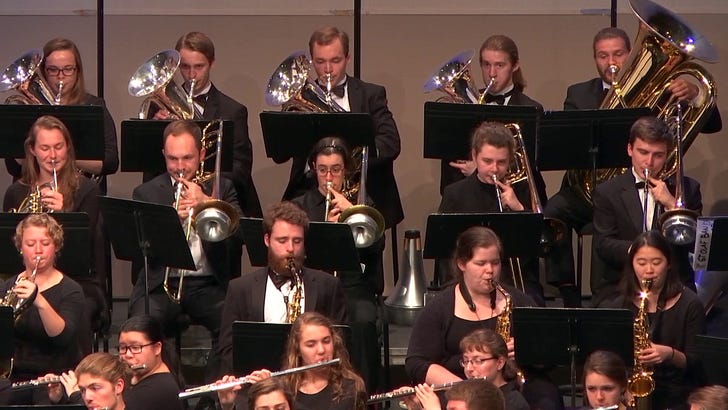Recording:
Aaron Perrine’s music often finds its voice in nature, and maybe that’s why it speaks so clearly to me. I’m writing this just after returning from a three-day paddle and hike through Congaree National Park, a stunning, biodiverse floodplain outside Columbia, South Carolina. Though we were a group of four, what stayed with me was the quiet: the stillness of the cedar waters, the hush of towering trees, the gentle creak of oars. That silence stays with you. It recalibrates your spirit.
Temperance was born from a similar experience on Minnesota’s North Shore, along the Temperance River. Perrine describes the piece as “a response to the beauty, serenity, and solitude found” in that landscape. And like the water I just paddled, his music flows with grace, restraint, and deep introspection.
Two musical qualities especially stood out to me. First, the pacing, harmonies shift slowly, even hover. Cedar Creek in Congaree moved so gently we could paddle downstream and back with ease, never rushing. Perrine’s harmonic language reflects that kind of still movement: always changing, never hurried.
Second, the orchestral color. The piece feels like a dialogue between two timbral worlds: the warm sonorities of clarinets and low brass, and the cool shimmer of flute, harp, piano, vibraphone, marimba, and Harmon-muted brass. These two “teams” blend and contrast throughout the work. The cooler colors often rise in wave-like gestures, mimicking flowing water. The warmer ones feel grounded, like the wooded banks beside it. Are they meant to represent water and forest? Depth and reflection? That’s left to the listener, and that’s the beauty of it.
For those who know the North Shore, this piece likely holds a very personal resonance. For those of us who’ve experienced similar wonder in other places, it becomes something else, equally true, equally meaningful. That’s what makes Temperance not just a tone poem, but a quiet, masterful act of musical reflection.




